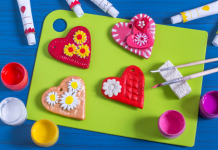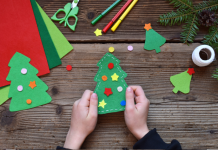Here’s come winter and along with it comes whole lot of snow and guess what? “CHRISTMAS HOLIDAYS!” As many kids are excited to play with snow this Christmas, there are certainly safety tips and measures that should be taken.
Here are some safety tips and measures for this winter.
Tips for Kids in winter
Appropriate winter dressing: Dress infants, toddlers and kids completely in warm and thick clothing, especially when going outdoors. Several layers of clothing will definitely protect from extreme colds. Also use gloves, thick boots, hat, etc. Most heat loss from the body happens from open fingers and feet. Infants, toddlers and young children need to be covered in an extra layer than their adult counterparts. Kids feel cold bitter than adults.

Source: Examiner

Source: JenSpends
Using blankets: If you use blankets to cover your baby, make sure that you use thick blankets and tuck the blankets in and around the edges. With loose ends, cold air can easily enter and bring down the body temperature down. So, tucking is necessary. Tuck the blanket only till the baby’s chest. Do not put the blanket on the baby’s face. This is can lead to suffocation. Instead you could cover the head and ears with a warm headgear. An infant’s head is vulnerable to cold weather due to lack of hair.
Hypothermia: Hypothermia is one of the conditions to avoid your kid to be. Hypothermia sets in when a person is exposed to low temperatures or is wearing wet clothes. This is a dangerous condition to be during winters. This condition can set in children more easily and quickly than in adults.
Symptoms of hypothermia: A hypothermic kid will have a low body temperature, shiver rapidly, can become lethargic and clumsy. The speech may also be blurred as the tongue can lose its agility due to the dropped temperatures. You notice, these symptoms, try wrapping the kid in warm blankets and immediately call emergency services.
Frostbite: Frostbite is another condition that needs to be taken care of. Frostbite occurs when an exposed body part or the tissue is frozen. This usually happens with fingers, nose, ears and feet. As mentioned above, wear warm clothing and winter-gear for hands, head, ears and for feet especially wear 2-3 pairs of socks and thick shoes.
Symptoms of frostbite: When frostbite occurs the symptoms would be pale, gray skin with blisters with complaints of numbness. Do not rub that part of the skin. Instead, immediately take the child indoors to a warm and insulated area. The frostbitten parts of the body must be kept in 105° F or you can apply gentle massage with hot water bag. Give the kid some warm clothes to wear and something hot to drink. Consult a doctor for continued numbness.
Keeping away hypothermia and frostbite: Kids playing in snow should go indoors periodically to avoid getting frostbite or hypothermia. If your kids are playing outdoors, then make intervals after which they should come inside and have something hot to drink and then continue with their play. This will keep their body temperatures warmer.

Source: Kareten Motion

Source: Babble

Source: Dump A Day

Source: Down Right Faith
Snow skating safety: Skating and sledding are two snow sports that parents or adult supervision is always required. While skating and sledding in snow can be fun, they also have their share of dangers. While skating, advice child to always go with the crowd and never to venture out alone. Advice your kid to wear helmet and kneepads while skating.
Snow sledding safety measures: While sledding, make sure that the sleds are away from motor vehicles to avoid accidents. Advice your kids to maintain proper posture while sledding. Keeping feet first and head away from the sledge can prevent head injuries. Also ask your kid to wear helmet while sledding. Do not let your kids sled into steep valleys. The steeper a valley, more speed the sled gets and the higher will be the risk of accidents. The best way is to avoid valleys which are steeper than 30° of angle.

Source: Snow Sleds

Source: Adventure Dad
Snowboarding and skiing safety: Snow skiing and snowboarding should also be done under adult supervision. Snow skiing and snowboarding can also cause serious injuries if they are performed without proper instructions and protective gear.
Avoid sunburn: Sunburn is another area that you should look for even during winter. This might sound like counter-intuitive, but it is also very relevant. If your kids are playing in snow during day time make sure that they wear UV protection sunglasses and sunscreen on exposed areas of the body. This is because, sun rays get reflected off of the snow and cause high UV exposure to eyes and exposed body parts.
Indoor fire protection measures: Apart from the outside safety measures, there are certain measures that must be taken indoors as well. During winter time, most households light up fire for warmth and negligence can cost dearly. To avoid this, take fire safety measures at home by installing or repairing smoke alarms, demonstrating and practicing fire drills before hand to avoid panic, installing carbon monoxide detectors in bedrooms, keeping fire extinguishers, first aid kits handy.
With these safety measures and tips, we hope that this winter will be safe and fun for everyone.












